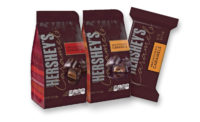As far as flavors go, it’s all about hitting it off with consumers.
There’s a fine line between creating exciting new flavors and ones so out there that consumers won’t appreciate them. People like new things, but they want to be reminded of what they already know.
“Consumers are still creatures of habit and go to their favorites 90 percent of the time,” says Ron Arb, senior sales at Abelei Flavors.
It explains the already-high and still rising demand for natural flavors, which come mostly from fruits. According to Abelei Flavors’ trend report, demand for natural flavors has increased by 35 percent since 2010.
“Candy and snacks with natural flavors and ingredients will be in demand from consumers who are looking for a way to get their candy ‘fix’ and still fit into their healthier lifestyle,” says Arb.
And there are always fruits that consumers will find newly intriguing. Flavors like melon, cranberry, lime, coconut and blackcurrant are on the rise, especially in Europe, says Lu Ann Williams, director of innovation at Innova Market Insights, in a webinar.
But people are, increasingly, embracing diversity and variety in flavors, say Nina Hughes-Likins, senior marketing manager, and Mary Svoboda, senior certified flavor chemist, of Synergy Flavors.
“Exotic” flavors, which can mean anything from “unique and new flavors” to “world flavors that are found in the deepest forests or lands,” are becoming more popular, says Arb.
Fruits less common in confectionery like banana, elderberry, pomegranate, golden berries, mango and goji berries can pair well with chocolate products. Others like tart lychee and ube, or purple yam, are found in predominantly tropical areas and appeal to more niche consumers.
Fruits can also pair with other flavors to create an exotic blend. Pomegranate goes with white tea, for example, and floral and herbal accents can create flavors such as mango cilantro, pineapple tarragon and lemon basil.
And then, perhaps even more “exotic” than the rest, are the more distinctive flavors. Although not the most intuitive pairings, these flavors make it work thanks to the perceived sophistication behind their uniqueness.
Maple bacon mini chocolate bars, for example, are made with “crisp bacon, delicate maple sweetness and bonfire smoked sea salt,” says Hughes-Likins.
Speaking of smoke, flavors created around the concept of roasted, toasted and smoked tastes that evoke the Umami senses are also making their way into confections. With labels like “fire roasted jalapeno,” “toasted pineapple coconut,” and “vanilla bean with salted burnt caramel,” these flavors have an edge to them in both name and taste.
But at the end of the day, indulgence still plays a part when it comes to candy.
“Despite the health and wellness trend, there will always be demand for indulgent products,” says Julie Eno, associate marketing manager of cocoa and chocolate, Cargill.
A report by Canadean states that in 2012, consumers spent over $600,000 million on fulfilling their desire of indulgent food. That’s no small number.
Which is why companies like Lindt are releasing new lines like the Creation bars, made to evoke the tastes of the most decadent desserts. These specialty bars come in flavors like crème brûlée, molten lava cake, hazelnut torte and mint coulis and promise to give consumers a luxurious tasting experience.
In other words, sophistication matters.
That’s probably why Jelly Belly has also caught on. Recently they released a draft beer-flavored jelly bean, as well as a champagne-flavored one mere weeks before the new year. They also regularly bring back seasonal favorites like pumpkin pie, eggnog and candy cane.
Other producers have also begun to introduce products that contain alcoholic flavors, like bourbon, whiskey, champagne and wine.
With all of the new attempts to create lasting and popular flavors, it’s important to remember that the consumer’s desires determine popularity. The good news is, it’s still all about taste.
Consumers are experience-driven and willing to try creative products and unique flavors, and their purchase decisions are ultimately affected by whether or not they enjoy eating those products. Which means no matter how weird a new flavor may seem, tasting good can still ensure its success.
“It’s all about balancing the classics and new, exotic flavors,” says Eno. “In some cases, it doesn’t matter how obscure the pairings may seem. It’s all about how the final product tastes.”











